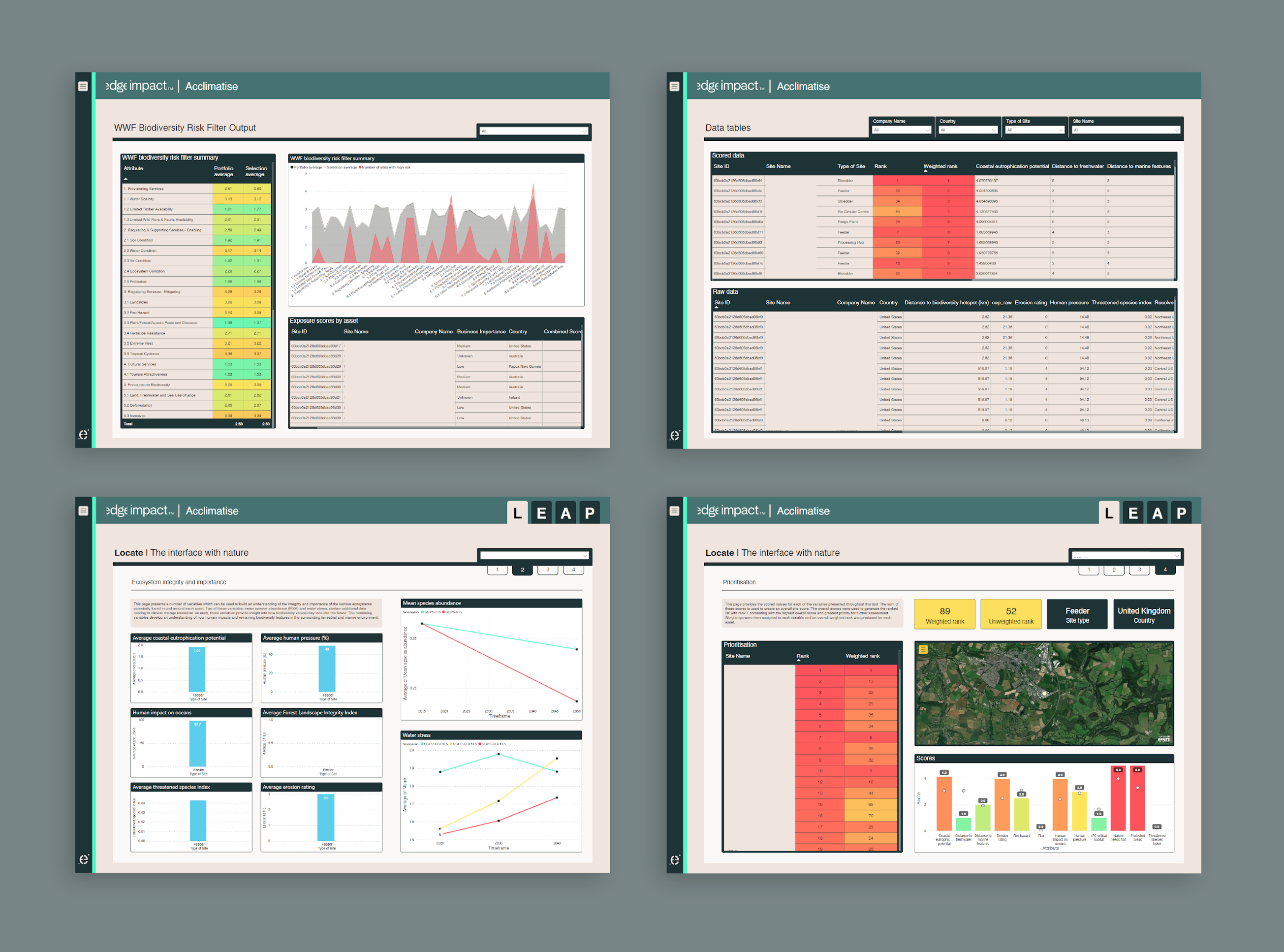Global impact consultancy and ACE Hub Technical Partner Edge Impact recently launched their new Nature Interface Assessment Tool, which helps clients understand the interaction of their operations with nature and mitigate nature-related risks in their business.
The tool captures the proximity of company sites of operation to ecosystems of significance, the type of operations and the vulnerability of the natural ecosystems to potential impacts. This data is then analysed to offer clients a prioritised list of sites for attention, enabling evidence-based decision-making.
Globally, while more companies are improving their carbon and climate impacts, it is becoming clear that reducing carbon emissions alone will be insufficient to address environmental issues and a more comprehensive approach to ecosystem and biodiversity management will also be required. Businesses need to transform their attitude from one that focuses on doing no harm to one that involves actively restoring and regenerating natural systems.
Edge Impact Principal Consultant, Sarah Day, explains the need for a data-backed approach to support organisations looking to take the first step towards understanding their impact on nature.
“Nature’s entry into the global reporting arena comes at a point in time where the need to substantiate any sustainability or ESG-related claims is paramount. Nature poses a unique difficulty in quantifying impacts and dependencies, which we will need to work through as a global society.”
‘But there are some ‘non-regrettable’ first steps, which will help any organisation to understand the premise of its relationship with nature,” says Day.

Nature Interface Assessment Tool, Image Source- Edge Impact.
Initiatives like the Taskforce on Nature-related Financial Disclosures (TNFD) are developing frameworks to help organisations report on their nature-related risks, set up science-based targets and encourage biodiversity concerns to become more mainstream within organisations.
The assessments done by Edge’s tool have been curated using multiple GIS layers adopted from the TNFD guidance and other complementary sources. By helping organisations understand where they stand in terms of their interaction and impacts on nature, the tool will help them take their first step towards actioning nature-related plans.
Companies of any size or industry can utilise Edge’s tool as it is built bespoke for each organisation. Once the prioritised list of sites is developed, an Edge consultant will outline the next best steps, such as developing a strategy for nature, assessing product and/or commodity supply chains, drafting a policy or looking to develop action plans for the sites of high importance.
“All too often, the third pillar of the circular economy, ‘regenerate natural systems’, receives little to no airtime in the conversation on circularity transformation. Understandably so, our interrelationship with nature is complex, and oftentimes entities lack data and visibility, particularly through supply chains, to develop a picture of their effects and reliance," says Day.
“This is why Edge has developed the Nature Interface Assessment Tool V0.1, leveraging the TNFD framework, geospatial data and natural capital measurement techniques to guide our approach to quantifying asset level direct and indirect nature impacts and dependencies.”
For more information and to begin your company’s nature-positive journey, visit Edge Impact’s Nature Interface Assessment Tool.